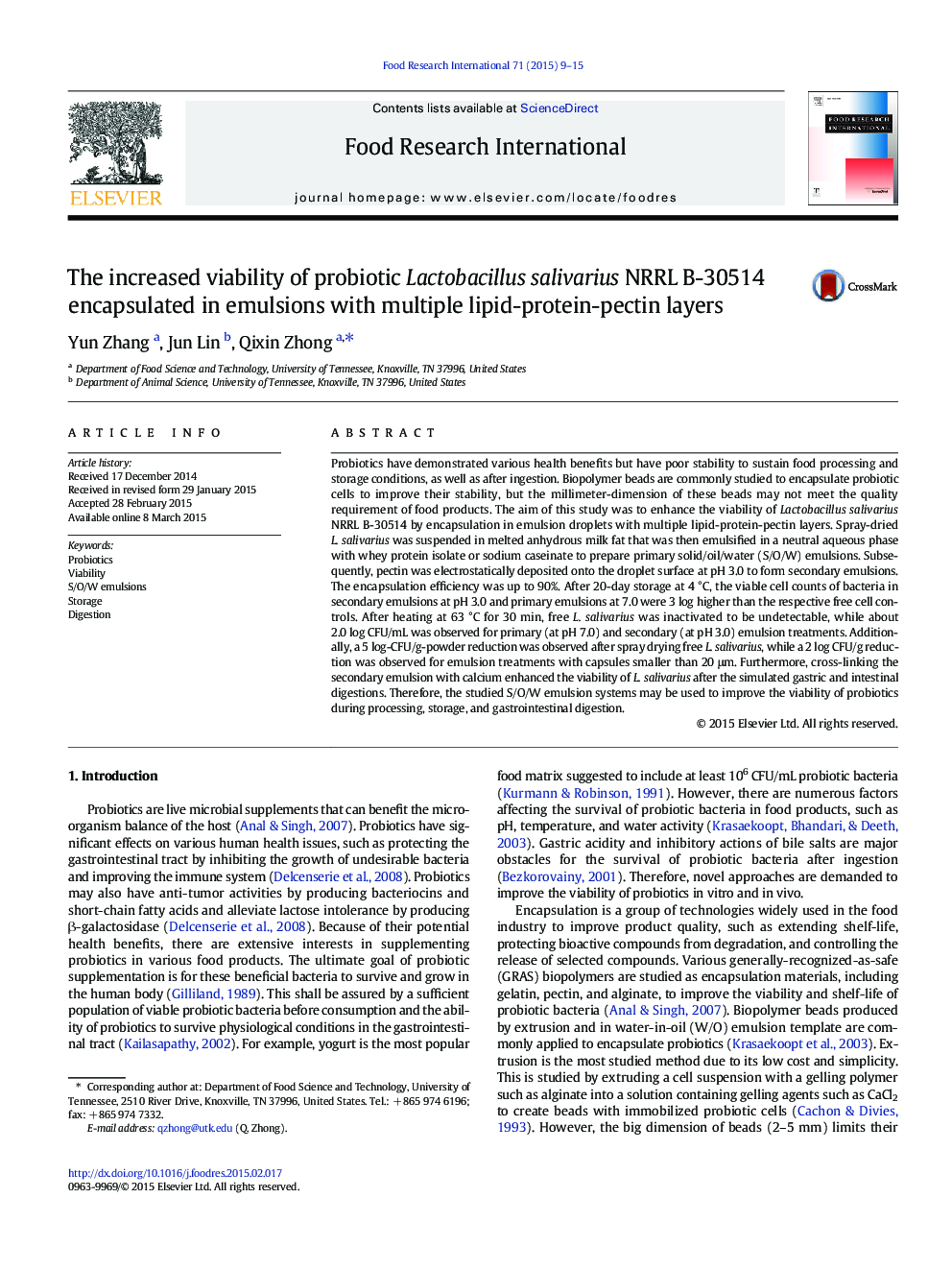| کد مقاله | کد نشریه | سال انتشار | مقاله انگلیسی | نسخه تمام متن |
|---|---|---|---|---|
| 4561534 | 1628475 | 2015 | 7 صفحه PDF | دانلود رایگان |

• Probiotic Lactobacillus salivarius was encapsulated as solid/oil/water emulsions.
• Encapsulation efficiency was higher in secondary than in primary emulsions.
• Capsules were smaller than 20 μm and much smaller than biopolymer beads.
• Encapsulation improved the storage and thermal stability of L. salivarius.
• Secondary emulsion with calcium improved the cell viability after in vitro digestions.
Probiotics have demonstrated various health benefits but have poor stability to sustain food processing and storage conditions, as well as after ingestion. Biopolymer beads are commonly studied to encapsulate probiotic cells to improve their stability, but the millimeter-dimension of these beads may not meet the quality requirement of food products. The aim of this study was to enhance the viability of Lactobacillus salivarius NRRL B-30514 by encapsulation in emulsion droplets with multiple lipid-protein-pectin layers. Spray-dried L. salivarius was suspended in melted anhydrous milk fat that was then emulsified in a neutral aqueous phase with whey protein isolate or sodium caseinate to prepare primary solid/oil/water (S/O/W) emulsions. Subsequently, pectin was electrostatically deposited onto the droplet surface at pH 3.0 to form secondary emulsions. The encapsulation efficiency was up to 90%. After 20-day storage at 4 °C, the viable cell counts of bacteria in secondary emulsions at pH 3.0 and primary emulsions at 7.0 were 3 log higher than the respective free cell controls. After heating at 63 °C for 30 min, free L. salivarius was inactivated to be undetectable, while about 2.0 log CFU/mL was observed for primary (at pH 7.0) and secondary (at pH 3.0) emulsion treatments. Additionally, a 5 log-CFU/g-powder reduction was observed after spray drying free L. salivarius, while a 2 log CFU/g reduction was observed for emulsion treatments with capsules smaller than 20 μm. Furthermore, cross-linking the secondary emulsion with calcium enhanced the viability of L. salivarius after the simulated gastric and intestinal digestions. Therefore, the studied S/O/W emulsion systems may be used to improve the viability of probiotics during processing, storage, and gastrointestinal digestion.
Journal: Food Research International - Volume 71, May 2015, Pages 9–15